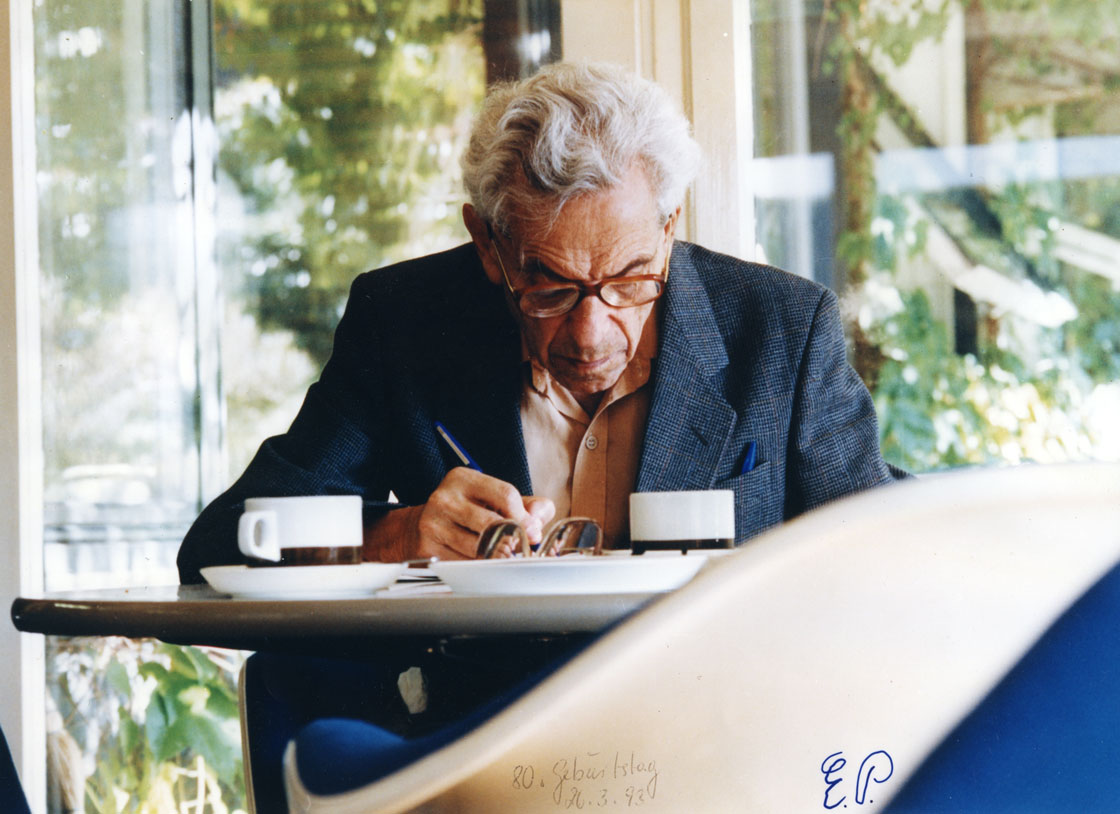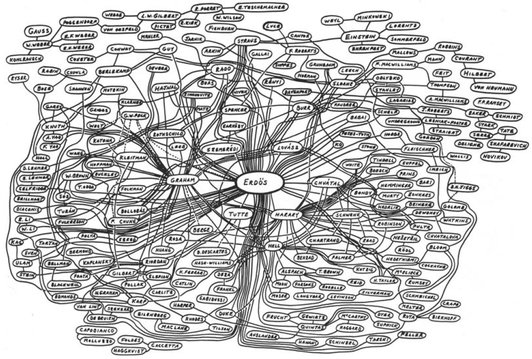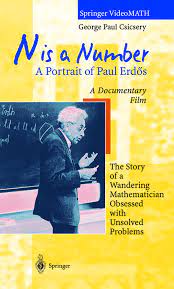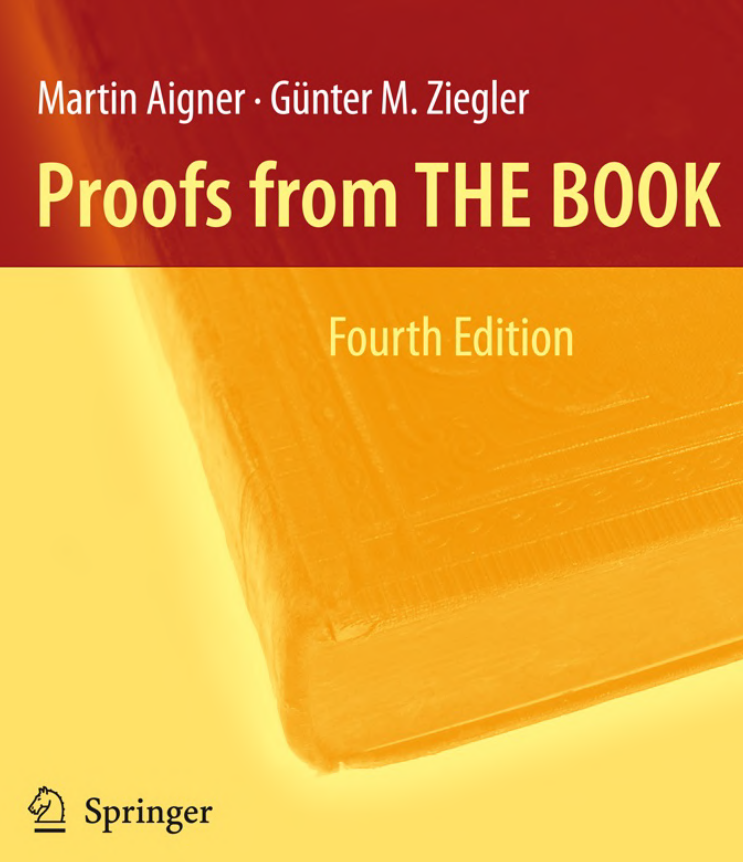The Life and Legacy of Paul Erdös
A Mathematician for the Ages

Paul Erdös
When one speaks of Paul Erdős, it’s as if one has whispered the secret name of a mathematical deity, summoning forth the very essence of intellectual curiosity and rigorous thought. Erdős was no mere mathematician, though his contributions would have sufficed to solidify that title. He was, in essence, a philosopher of numbers, a sage who sought not just solutions, but the ethereal beauty that underpins the logical structure of the universe.
Picture a man for whom boundaries were but transient illusions, a wanderer in the vast landscape of mathematical inquiry. Erdős was not tethered to any institution, any country, or, dare we say, any conventional way of life. He was a global citizen long before the term became a modern trope, living out of a suitcase, a collection of mathematical problems his only constant companions.
Imagine a soul so attuned to the resonances of mathematical thought that conventional life paled in comparison. Erdős didn’t just work in mathematics—he inhabited it. His incessant quest for knowledge was akin to a spiritual journey, where each theorem proved or conjecture resolved was not an end, but a waystation on the path to eternal wisdom.
His life was an ode to the very spirit of scientific inquiry. Just as a monk dedicates every waking moment to the contemplation of the divine, Erdős was engrossed in the ceaseless pursuit of mathematical truth. His devotion was almost religious in fervor, but his church was the community of like-minded seekers, his liturgy composed of equations and proofs, his sacraments taken in the form of intellectual exchange.
It was this unyielding dedication, this almost fanatical devotion, that elevated him from the realm of mere mortals to the echelons of the truly great. He didn’t merely study mathematics, he lived it; he didn’t just solve problems, he unearthed the treasure buried within them; he didn’t merely contribute to his field, he transformed it.
As we delve into the myriad facets of his life, remember that Erdős was not just a man, but an embodiment of an ideal—an exemplar of what it means to be truly devoted to the life of the mind. Through the course of this article, let us not just traverse the timeline of his existence but also understand the profundity of his influence, an influence that transcends his field to offer insights into the very nature of dedicated human endeavor.
So, dear reader, fasten your intellectual seatbelts as we embark on a journey through the life of Paul Erdős—a life that was not merely lived but was, in every sense, calculated to perfection.
Early Years: A Prodigy Emerges
The genesis of genius is always a spectacle to behold, and in the case of Paul Erdős, it was as if Fate herself had conspired to birth a mathematical virtuoso. Born into the tumultuous times of pre-World War I Europe, Erdős seemed to be touched by a certain celestial grace. Budapest, his birthplace, was already a crucible of intellectual and artistic fervor, providing the perfect backdrop to the nascent genius.
Picture a household where the air was thick not with lullabies but with mathematical conjectures and logical proofs. His mother, a mathematical luminary in her own right as a high school teacher, must have sensed the extraordinary path her son was destined to walk. It was not so much a home as it was a sanctuary for nurturing embryonic talent.
While other children were mastering the art of speech and stumbling upon their first steps, Erdős was already engaging with the infinite world of numbers. Consider the marvel of it—a four-year-old child, not merely counting but calculating the very fabric of time itself! He didn’t just understand numbers; he conversed with them, establishing an intimate relationship that most would spend a lifetime trying to cultivate.
His early fascination with calculating lifetimes in seconds was not just a parlor trick; it was a glimpse into a mind for which numbers were not mere digits but stories, each with its own narrative, its own life cycle. It was as if he was peering into the very cosmos, teasing out its numerical secrets, one calculation at a time.
The home, under the watchful eye of his scholarly mother, was his first academy. But this was no insular academic cocoon; it was a place that encouraged Erdős to see the world in its most fundamental language—mathematics. Each numeral he calculated, each second he counted, was not just an isolated event but a step in a grander symphony, one that he would go on to conduct throughout his life.
To merely say Erdős was precocious would be to undersell the grandiosity of his early talents. He was an enigma, a child prodigy who seemed to be born not just with extraordinary abilities but with a burning desire to harness them, to cultivate them, and to devote them to the greater pursuit of mathematical enlightenment.
Thus, young Erdős was not merely a prodigy but a harbinger of the monumental contributions he was destined to make. A wunderkind in the truest sense, setting the stage for a life that would be anything but ordinary, each calculation a prelude to an odyssey that would forever change the mathematical landscape. But even this early glimmer of brilliance was but a faint star in the constellation of his storied life.
Academic Ascent: The Rise of a Mathematician
The young Erdös soon soared like an intellectual comet, the years that followed were nothing short of meteoric, each ascending trajectory a radiant display of academic brilliance. Picture a young Erdős at the threshold of adulthood, stepping into the hallowed corridors of university at just 17. It was not so much an entry as it was a coronation, a proclamation of a new intellectual sovereign on the academic horizon.
By the age of 21, when most are still navigating the labyrinthine intricacies of adulthood, Erdős had already donned the mantle of a Ph.D. But this was no mere degree; it was a testament, an engraved invitation to the inner sanctums of mathematical lore. The Ph.D. was less a certification of knowledge acquired than a key to the Pandora’s box of unsolved mathematical mysteries that beckoned him.
And so, the young savant embarked upon a most unconventional journey. Erdős became a wayfarer of the intellect, a nomad whose home was wherever there was a problem yet to be solved, a theorem yet to be proved. His was a vagabond existence, unanchored by the traditional constraints of home and hearth, but immensely rich in the intangible wealth of ideas and inspirations.
He roamed from campus to campus, from conference to seminar, a wandering minstrel in the realm of numbers. It was a pilgrimage with no final destination, each stop merely a station on the ceaseless journey towards greater understanding. As he meandered through the world’s leading institutions, Erdős became less a visiting scholar and more a roving ambassador of mathematical inquiry.
Devoid of a permanent home or office, his belongings fit neatly into a suitcase, as if embodying the very essence of his minimalist life—everything superfluous jettisoned, save for the mathematical challenges that filled his days and fueled his nights. Yet, in this Spartan existence lay a richness of experience, a wealth of intellectual connections that spanned continents and defied conventional wisdom.
But this nomadic lifestyle was not a sacrifice; it was a strategic maneuver. Erdős understood that intellectual companionship, the collaborative dance of minds joined in academic pursuit, was where true progress lay. He didn’t just visit other mathematicians; he enriched them, challenged them, dared them to peer over the edges of their intellectual comfort zones.
So, when we speak of Erdős’ academic ascent, we speak not just of a career but of an odyssey, a ceaseless journey through the terrains of mathematical endeavor. Each theorem proved, each paper published, was but a footprint on the sands of this eternal pilgrimage, a testament to a life devoted to the ceaseless quest for mathematical enlightenment. And what a magnificent quest it was!
Erdös Numbers: A Legacy of Collaboration
This man was not an isolated genius scribbling away in a dusty room. No, Erdös was a collaborative spirit, believing in the collective endeavor of mathematical exploration. This spirit gave birth to the Erdős number, a measure of academic closeness to him based on co-authorship of mathematical papers. To have an Erdős number of one is an honor many cherish, an initiation into an exclusive intellectual fraternity.
The concept of Erdős numbers! What an elegant testament to the interconnected tapestry of scholarly pursuit. For Erdős was not just a mathematician; he was a maestro conducting an orchestra of minds, each contributing their own unique note to the grand symphony of intellectual discovery. It was not merely about individual accomplishment; it was about fostering an ecosystem of collective brilliance.
Picture Erdős at the epicenter of this elaborate web, not as a spider ensnaring prey but as a luminary emitting rays of intellectual enlightenment. Each collaborator touched by this light would then go on to illuminate others, cascading forth in an ever-expanding circle of knowledge and understanding. It was not just a collaboration; it was an initiation, an induction into an elite society of scholars forever linked by their mathematical endeavors.
The Erdős number, then, became more than a numerical label; it became a badge of honor, a marker of having engaged in the sacred ritual of collaborative problem-solving. To possess an Erdős number of one is akin to holding a knighthood in the realm of academic nobility. It is an emblem of not just scholarly achievement but of a kinship with the very spirit of collective inquiry that Erdős so fervently espoused.
Consider the ripple effect of such a concept. Each individual with an Erdős number becomes a node in a grand network, interconnected by the tendrils of intellectual pursuit. The beauty of it! For every theorem proved or conjecture resolved is not just a solitary victory but a collective triumph, a testament to the synergistic power of minds united in a common goal.
To say that Erdős left a legacy would be to utter a profound understatement. He left behind an infrastructure, a framework that transcends the traditional boundaries of academic lineage. By instituting the concept of the Erdős number, he transformed the very geometry of scholarly networks, instilling a dimensionality that extends beyond the page or the podium, into the very fabric of intellectual history.
But let us not forget, to participate in this web of intellectual camaraderie, to own an Erdős number, is to be part of something greater than oneself. It is to enter into a fellowship that does not merely aim to solve problems but to elevate the entire field of mathematics, one collaboration at a time.
And so, the Erdős number stands not just as a legacy of one man’s brilliance but as an eternal monument to the power of collaborative genius. How splendidly fitting that a life dedicated to the collective pursuit of knowledge should leave behind such a resonant echo, reverberating through the annals of academic history.

Erdös Graph
Prolific Output: The Sage Who Never Rested
Paul Erdős, the sage who never rested, the tireless sentinel at the vanguard of mathematical discovery! Picture him, a dervish swirling through the hallways of academia, his mind ablaze with the latest puzzle, the latest enigma begging to be untangled. For Erdős, life was not a sequence of years but a series of problems, a relentless march of questions each clamoring for an answer.
Imagine the sheer volume of his output—over 1,500 papers! This was not mere prolificacy; it was a ceaseless torrent of intellectual vitality, a gushing wellspring from which flowed groundbreaking ideas and revolutionary theories. This enormous body of work was not the product of mechanical toil but a manifestation of his zealous commitment to his craft. What a spectacle to contemplate!
The landscape of mathematics was his canvas, and oh, what a sprawling, intricate tapestry he wove! From the arcane recesses of number theory to the labyrinthine complexities of combinatorics, Erdős left not a single mathematical stone unturned. His contributions spanned the gamut, reshaping the contours of established fields and pioneering entirely new avenues of inquiry.
But let us not be beguiled solely by the quantity; let us also marvel at the quality, the depth, the piercing insight of each publication. Each paper was not merely a drop in the ocean but a luminous gem, carefully cut and exquisitely polished to reveal its inner brilliance. For Erdős, each theorem proved, each conjecture solved, was not an end but a beginning, a gateway to an ever-expanding frontier of unknowns.
The grand tapestry of his work was interwoven with threads of collaborative genius, as scholars from every corner of the mathematical world joined him in his quests. It was as if each paper was a voyage, each theorem a discovered land, each collaborator a fellow explorer in this boundless odyssey of the mind.
It is said that mathematicians are the poets of logical reasoning, and if so, then Erdős was the Homer of this epical journey, authoring not just papers but sagas, epic tales of triumph and discovery that will resound through the corridors of scholarly lore for generations to come.
Thus, when we speak of Erdős prolific output, we speak of a living legacy, a monumental edifice constructed from the building blocks of curiosity, tenacity, and above all, unquenchable passion. In the annals of academic history, few have penned so many chapters, leaving behind not just a library of work but a universe of thought, ever-expanding and eternally inspiring.
Personal Quirks: The Eccentric Sage
Erdős, the enigmatic sage whose quirks were as captivating as his theorems! This was a man who saw not just the numbers and equations, but the hidden choreography of the universe, attributing the most elusive mathematical truths to a “Supreme Fascist” who concealed the ultimate proofs from mortal eyes. What a delightful concoction of reverence and irreverence, a testament to his complex relationship with the ethereal dimensions of his craft!
His personal life was equally compelling, defined not by conventional milestones—no marriage, no settled abode—but by an undying allegiance to the quest for mathematical enlightenment. He was a man unburdened by societal norms, a free spirit whose compass was eternally set toward the next unsolved problem, the next uncharted intellectual territory.
And let us not forget his peculiar fuel—copious amounts of coffee and amphetamines. For most, these would be mere stimulants, but for Erdős, they were alchemical ingredients, catalysts in the churning cauldron of his inexhaustible mind. Of course, one can only speculate about the untapped reserves of insight that might have lain dormant without these aids. Yet, who are we to question the eccentricities of genius?
Picture him, this nomadic seer, a cup of coffee in one hand, a sheaf of equations in the other, his eyes ablaze with the intoxicating allure of yet another mathematical mystery. It is as if each sip of coffee, each dose of amphetamine, was a votive offering to the gods of numbers and logic, an invocation for divine inspiration in the ceaseless pilgrimage of his life.
These quirks were not distractions; they were adornments, facets of a multidimensional persona that transcended the simple sum of its parts. They gave texture to his genius, a humanizing counterpoint to the towering intellect that defined him. In Erdős, the line between eccentricity and brilliance was not just blurred; it was erased, each feeding into the other in a mesmerizing dance of individuality and intellect.
So, when we ponder the enigma of Paul Erdős, let us remember that his quirks were not blemishes on an otherwise pristine legacy. No, they were essential hues in the colorful mosaic of his life, the idiosyncratic brushstrokes in a masterful portrait of one of the most captivating minds the world has ever known. What a wondrous enigma, what a magnificent tapestry he was!
Passing and Legacy
Paul Erdős, whose mortal vessel may have ceased to be in 1996, but whose intellectual essence remains an eternal flame in the sanctuary of mathematical wisdom! To say he “passed away” is to invoke a woefully inadequate phrase; for legends do not merely pass—they transcend, they metamorphose, they ascend into an immortal realm where their contributions echo eternally.
The legacy of Erdős is monumental, indeed—each theorem a pillar, each paper a stepping stone, each collaboration a golden thread in the rich tapestry of academic discourse. His work is not confined to the dusty shelves of libraries; it thrives in the minds of countless mathematicians who walk in the path he blazed. Such a path! A winding journey through the most intricate labyrinths of numbers and logic, a treasure trail sprinkled with gems of pure intellectual beauty.
But let us not forget, Erdős was not merely a mathematical virtuoso; he was a visionary, a harbinger of a new age of collaborative exploration. His ethos of sharing and collective endeavor has become the very bedrock upon which modern mathematical research is built. The Erdős number, the collaborative papers, the ceaseless wandering from one academic haven to another—all these are not just remnants of a life lived fully, but guideposts for those who wish to follow in his illustrious footsteps.
Even in absence, Erdős remains a palpable presence, his spirit a whispering muse in the quiet corners of mathematical thought. His theorems endure as timeless edifices in the ever-expanding city of human knowledge, his methods continue to inspire new generations of scholars, and his quirks are fondly remembered as the endearing idiosyncrasies of a genius unfettered by convention.
In the annals of intellectual history, the name Erdős will forever stand as a symbol, a beacon, a legend—a testament to the indomitable spirit of inquiry that propels mankind forward in its ceaseless quest for truth. How fitting that a man who dedicated his life to the eternal, to the infinite, to the boundless, should leave behind a legacy that is, in itself, without end.
The Everlasting Echo: The Dual Legacy of Paul Erdős in Mathematics and Collaboration
As we come to the final cadence of this intellectual overture, let us reflect on the ineffable mystique of Paul Erdős. Here was a man not just of numbers, but of immeasurable impact, a titan whose footprints are etched not just in the sands of mathematical literature, but in the very soul of the discipline.
This celestial voyager took us on a remarkable odyssey through the heavens and abysses of mathematical thought, an odyssey not of solitary contemplation, but of collective discovery. What a beautiful paradox! A man consumed by the inexhaustible quest for individual understanding, yet fervently committed to the communal expedition toward intellectual enlightenment.
His legacy, therefore, is twofold. On one hand, he bequeaths us a treasure trove of theorems, conjectures, and insights—each a celestial star in the endless sky of human knowledge. On the other, he leaves us an ethos, a culture, a spirit of collaboration that transcends the written word and lives on in the beating hearts of mathematicians worldwide.
Paul Erdős was not merely a chapter in the annals of mathematics; he was a seminal volume, a turning point, a watershed moment that forever altered the trajectory of scholarly thought. If genius is the eternal footprint in the sands of time, then Erdős left not just a footprint, but an indelible crater, an everlasting monument to the insatiable human yearning for understanding.
And so, as we close this humble tribute, let us not say ‘The End’, for the tale of Paul Erdős is far from over. In each equation pondered, in each theorem proved, in each collaborative endeavor, his spirit lives on—invincible, iridescent, and eternally inspiring. What a life! What a legacy! What an extraordinary journey through the wondrous landscape of the mind!
References
“The Man Who Loved Only Numbers” by Paul Hoffman
“My Brain is Open: The Mathematical Journeys of Paul Erdős” by Bruce Schechter
Erdős’ Collected Papers
Journal of Number Theory
Hungarian Academy of Sciences - Erdős Biography
But remember, the story of Paul Erdős, like all great stories, is eternal. It invites you to participate, to learn, and to add your own insights into the life of this remarkable man.

N is a Number

Proofs from The Book

The Man Who Loved Only Numbers